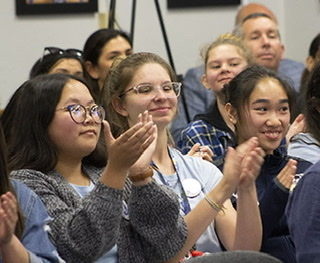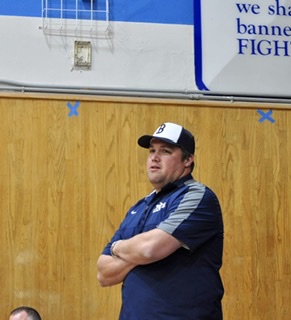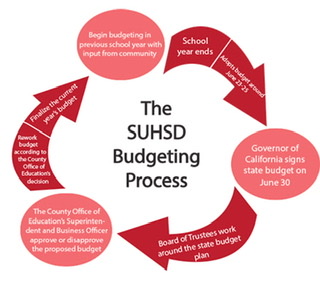SUHSD outlook on budget policy and future funding
March 10, 2020

The SUHSD is undoubtedly in a rather precarious position at the moment. Board officials approaching the situation with great delicacy are bound to upset some in the dilemma and have received backlash from various corners of the community. Whether it be teachers all wearing red at board meetings in support of union “brothers, sisters, students or parents” or advocates shouting at district officials against proposed cuts, the district’s budget crisis has sparked much controversy. The new proposal for the 2020-2021 school year will most likely not be available to the public with changes made considering the community outreach that has occured to the budget until April of this year.
Concerning the budgetary problems, however, district officials claim that statewide educational policy is the source of the issues that they are facing. Specifically, officials point to declining enrollment as the reason that the budgetary crisis continues.
The state of education in California according to a variety of educational resources is below the national average in terms of per-pupil spending and is believed by district officials to be another problem faced by the SUHSD.
“We are advocates for more funding in education,” Director of Grants and Communication Manuel Rubio said. “We’re kind of [at] the bottom in terms of per-pupil funding as a state. As a state, California is the fifth or sixth largest economy in the entire world, and we are probably 41st or 37th in terms of per-pupil funding.”
These problems of course are not unique to the SUHSD. Janney spoke of a piece recently published in The San Diego Union Tribune that outlined the deficit spending that is occurring across San Diego County.
“All but one of the 42 school districts in San Diego County are expecting to spend more than they take in,” according to The San Diego Union Tribune piece.
The United States government, as well as the county of San Diego’s education, tend to lean towards deficit-minded spending, which is the perspective in the county that districts are moving towards as a whole.

Athletic Director Tyler Arciaga’s position is currently on the proposed list of district cuts.
The programs and positions potentially being cut include the subtraction of the position of athletic director from all schools that are part of the SUHSD, as well as the consolidation of alternative learning options. These options include programs such as the learning center at Bonita Vista High (BVH). Janney expressed the priorities and decisions concerning the allocations were being made in hopes of keeping cuts away from the classrooms and the students that make up the SUHSD student body.
“[We try to figure out how] we can be more cost effective and keep any kind of decisions or cuts farthest away from the classroom [and] the students,” Janney said. “We’re just trying to figure out how we can be more effective and efficient with what we have.”
In addition the explanation of the purposes of the SUHSD, Janney stood from her seat, pointing to the talking points laid out upon the Local Control Accountability Plan poster displayed in offices and classrooms across the district as a reminder for students and faculty members of the district’s goals.
Few solutions were spoken on during the interview, while the subject of crowdsourcing, having community members raise money for programs, did arrive as a possibility, voiced by both Janney and Rubio as a way for the community to help the SUHSD with the funding of the many proposed cuts in the district.
“If the parents and the students in the IB program wanted to raise extra money to help support with additional resources, [they can] absolutely do that,” Janney said. “People do that all the time, they [can] donate money to programs [whenever they want to].”

Each upcoming school year the SUHSD Board of Trustees determines a budget process timeline accounting for the California Governor’s proposal and revisions. This process as it continues draws concern from many community members and is oftentimes considered to be overly complicated. The complexity is something that community members and district officials alike express concern for.
“I think that if the general public knew how complicated it is, people would say, ‘Wait a minute, it shouldn’t be that complicated,’’’ Rubio said.“If we can simplify this process and make it more fair, I’m all for that.”